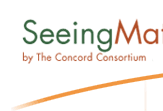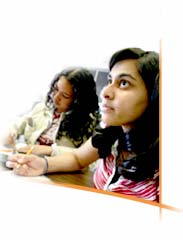 |
We believe that
good learning integrates experience, observation, and conversation.
Seeing Math™ therefore builds upon complementary media and learning
experiences. At the core of each Seeing Math™ course are video episodes
that depict experienced teachers at work with students. These serve
as a focus for participants' reflection on their own work and on
the challenges of teaching and learning mathematical concepts. Solving significant math
problems and modeling these problems with interactive software clarifies the key mathematical concepts, helping participants
to deepen comprehension. Commentary by nationally recognized experts
highlights relevant learning theory, standards, and teaching practices.
References to national and state standards, sample lesson plans,
and suggested activities link the learning experience to classroom
realities. Online discussions lead participants to new insights
through a shared learning experience. |
 |
©2005 The Concord Consortium
Home | About Us | Seeing Math™ Elementary | Seeing Math™ Secondary | Try Seeing Math™ | Resources | Contact Us | Site Map

 Seeing
Math's professional development programs teach and reinforce both
mathematical and pedagogical knowledge. Focusing on math concepts
aligned with NCTM and many states standards, Seeing Math™ was developed
to create teacher professional development that expands the use
of standards-based math curricula. In the belief that a few key
processes are pivotal to improving teacher practices and student
learning, our learning philosophy emphasizes:
Seeing
Math's professional development programs teach and reinforce both
mathematical and pedagogical knowledge. Focusing on math concepts
aligned with NCTM and many states standards, Seeing Math™ was developed
to create teacher professional development that expands the use
of standards-based math curricula. In the belief that a few key
processes are pivotal to improving teacher practices and student
learning, our learning philosophy emphasizes: